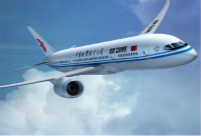

It has been a big year for China's military.
In April, China's first domestically produced aircraft carrier was launched, which was followed by the debut of its new generation of destroyer in June. In July, the country's first aircraft carrier allowed visits by the public for the first time.
As the 90th birthday of the People's Liberation Army (PLA) approaches, the country's army has shown how much its military capacity has grown and how committed it is to maintaining world peace.
A STRONGER ARMY
The PLA has come a long way since its birth during the armed uprising in the city of Nanchang on August 1, 1927, when it had only 20,000 soldiers.
Ninety years later, the country boasts 2 million servicemen, making it the world's largest military force, according to a national defense white paper titled "China's Military Strategy," published in 2015.
Besides the growth in numbers, the PLA has armed its soldiers with world-class equipment.
During China's epic V-Day parade in September 2015, the country displayed its Dongfeng-5B intercontinental strategic missiles, designed to carry nuclear warheads, and its Dongfeng-21D anti-ship ballistic missiles, described by some media as the "carrier killer."
Other cutting-edge weaponry included the PLA's state-of-the-art tanks, unmanned aerial vehicles, and its new generation of airborne early warning and control aircraft, carrier-based fighters and attack helicopters that fly low across the sky.
In April of this year, China launched its second aircraft carrier in a Dalian shipyard in northeastern province of Liaoning. It is the first carrier designed and built by China. The country's first carrier, the Liaoning, was a refitted Soviet Union-made carrier put into commission by the PLA Navy in 2012.
Another Navy development was the launch of a new destroyer, a domestically designed and produced 10,000-tonne vessel.
The destroyer is the first vessel of China's new generation of destroyers equipped with new air defense, anti-missile, anti-ship and anti-submarine weapons.
For military observers, all these achievements can be seen in a video titled "PLA Today" released by the Ministry of National Defense (MND) last week.
The 16-minute English-language video, with Chinese subtitles, displayed a host of unmanned "smart" military vehicles, reconnaissance robots and drones, followed by footage of live-fire drills in the South China Sea and the East China Sea in July last year.
"If war is declared, we are ready," one line said.
A MORE OPEN ARMY
The video was not the PLA's only bid for attention on social media.
The military debuted a five-episode live-streaming program on China's Twitter-like Weibo service on Tuesday.
The first episode featured China's airborne troops and showed the tough training soldiers must undergo.
The other four episodes will focus on soldiers from other service branches, the descendants of war heros, and war veterans.
Last year, the military released an action-packed online video featuring rap music to attract young recruits.
The PLA has also made real-life outreach efforts.
In early July, a flotilla including the aircraft carrier arrived in Hong Kong Special Administrative Region for a visit. During the trip, the Liaoning opened to the public for visits for the first time.
More than 5,000 Hong Kong people boarded the aircraft carrier and three escorting warships, during their stay in Hong Kong from July 7 through July 11.
"I have witnessed the progress of my country, and I am so proud standing on board the Liaoning," said a Hong Kong visitor who spent 14 hours queueing for the free ticket.
A PEACEFUL ARMY
In 2017, China, the world's second largest economy, budgeted 1.04 trillion yuan (about 153 billion U.S. dollars) for annual military expenditures, according to the Ministry of Finance (MOF) in March.
The figure is second only to the United States, which has a military spending budget of 583.7 billion dollars.
However, China's defense budget growth in 2017, at 7 percent, is actually the slowest in at least a decade. The increase last year was 7.6 percent, down from a multi-year run of double-digit growth.
"The majority of the defense budget will be spent on deepening national defense and military reforms, bolstering military and civilian integration, and improving the living, training and working conditions for service personnel at grassroots levels," said the MOF.
China's per capita military spending represented only about 5.6 percent of that of the United States, 11 percent of Britain's, and 25 percent of Japan's, said Maj. Gen. Chen Zhou.
Showing its determination in peaceful development, the country announced a cut of 300,000 troops from September 2015 levels.
China is also continuing its efforts in international cooperation.
As of June 2017, the Chinese military had participated in 24 UN peacekeeping missions, sending 31,000 personnel, 13 of whom lost their lives in duty, according to the MND's "PLA Today" video.
Since 2008, the Navy has dispatched 26 escort task force groups, including more than 70 ships for escort missions in the Gulf of Aden and off the coast of Somalia. More than 6,300 Chinese and foreign ships have been protected during these missions.
To improve cooperation in Africa and western Asia, China is setting up its first overseas support base in Djibouti in July. According to the PLA Navy, the base will ensure China's ability to perform missions, such as escorting, peacekeeping and humanitarian aid in the region.
The base will also assist with overseas tasks such as military cooperation, joint exercises, emergency rescue, evacuation and protection of overseas Chinese, and jointly maintaining the security of strategic international seaways.
 Picturesque summer scenery of Tuohulasu Prairie in Xinjiang
Picturesque summer scenery of Tuohulasu Prairie in Xinjiang Colors of summer: Yanhu lake transforms into muti-colored pools
Colors of summer: Yanhu lake transforms into muti-colored pools China’s high-speed railway now offers food at the click of a button
China’s high-speed railway now offers food at the click of a button New uniform coming to PLA
New uniform coming to PLA Gambler or dreamer?
Gambler or dreamer? China is world’s largest renewable energy producer, consumer
China is world’s largest renewable energy producer, consumer Chinese base in Djibouti not military expansion
Chinese base in Djibouti not military expansion Legislation needed to protect China’s dark sky resources
Legislation needed to protect China’s dark sky resources China’s domestic airlines' carrying capacity beats the US
China’s domestic airlines' carrying capacity beats the US Top 10 most sustainable cities in China
Top 10 most sustainable cities in China Top 10 European patent applicants in 2016
Top 10 European patent applicants in 2016 The power of 'She' in China
The power of 'She' in China Seven most beautiful art museums in China
Seven most beautiful art museums in China American media bigoted on Sino-US trade ties
American media bigoted on Sino-US trade ties China’s online media purification drive is changing millenials’ lifestyle
China’s online media purification drive is changing millenials’ lifestyle ‘World’s factory’ adapts to new era, setting example
‘World’s factory’ adapts to new era, setting example Attracted to the dark
Attracted to the darkDay|Week